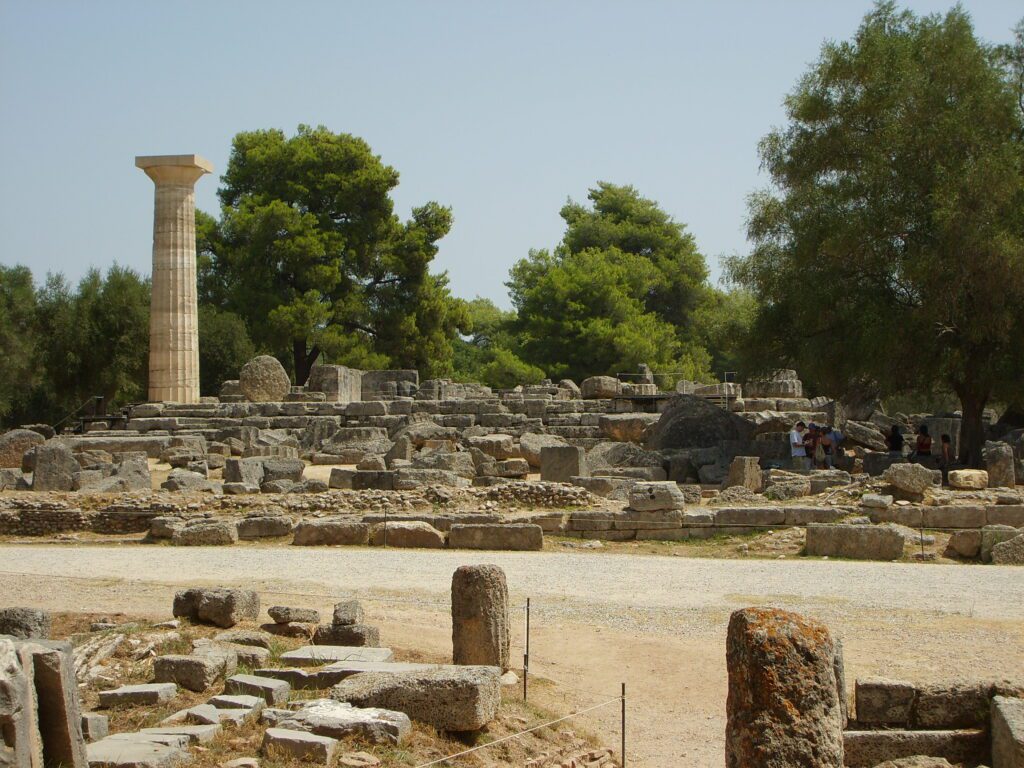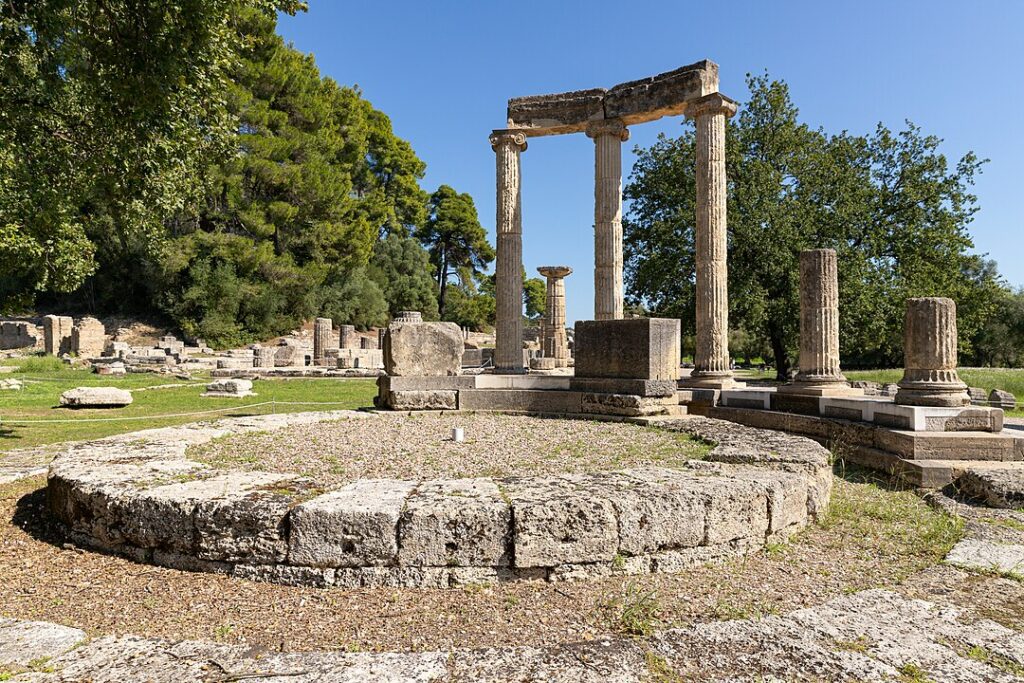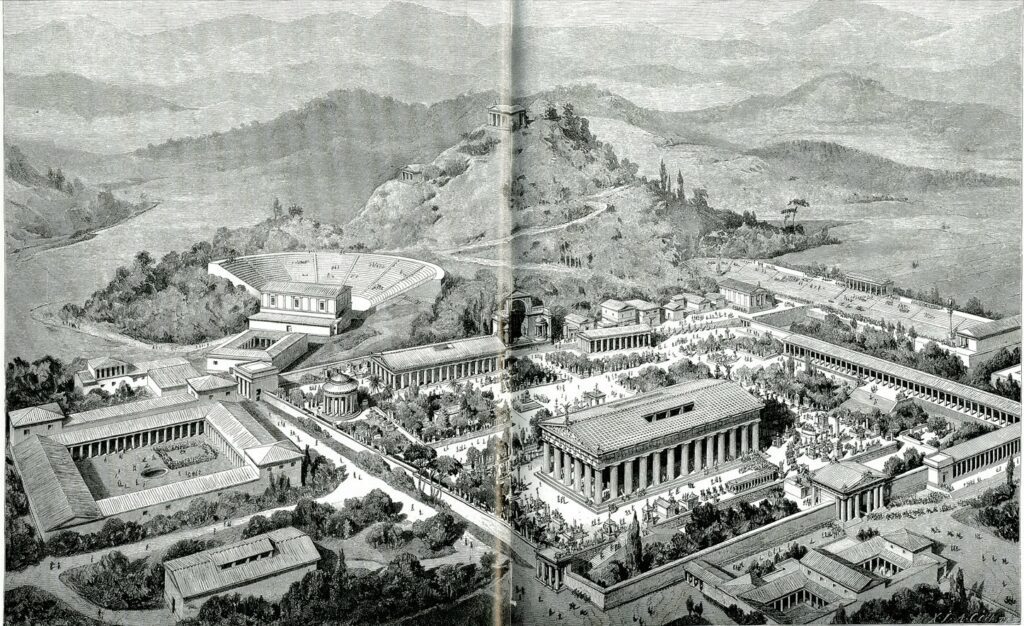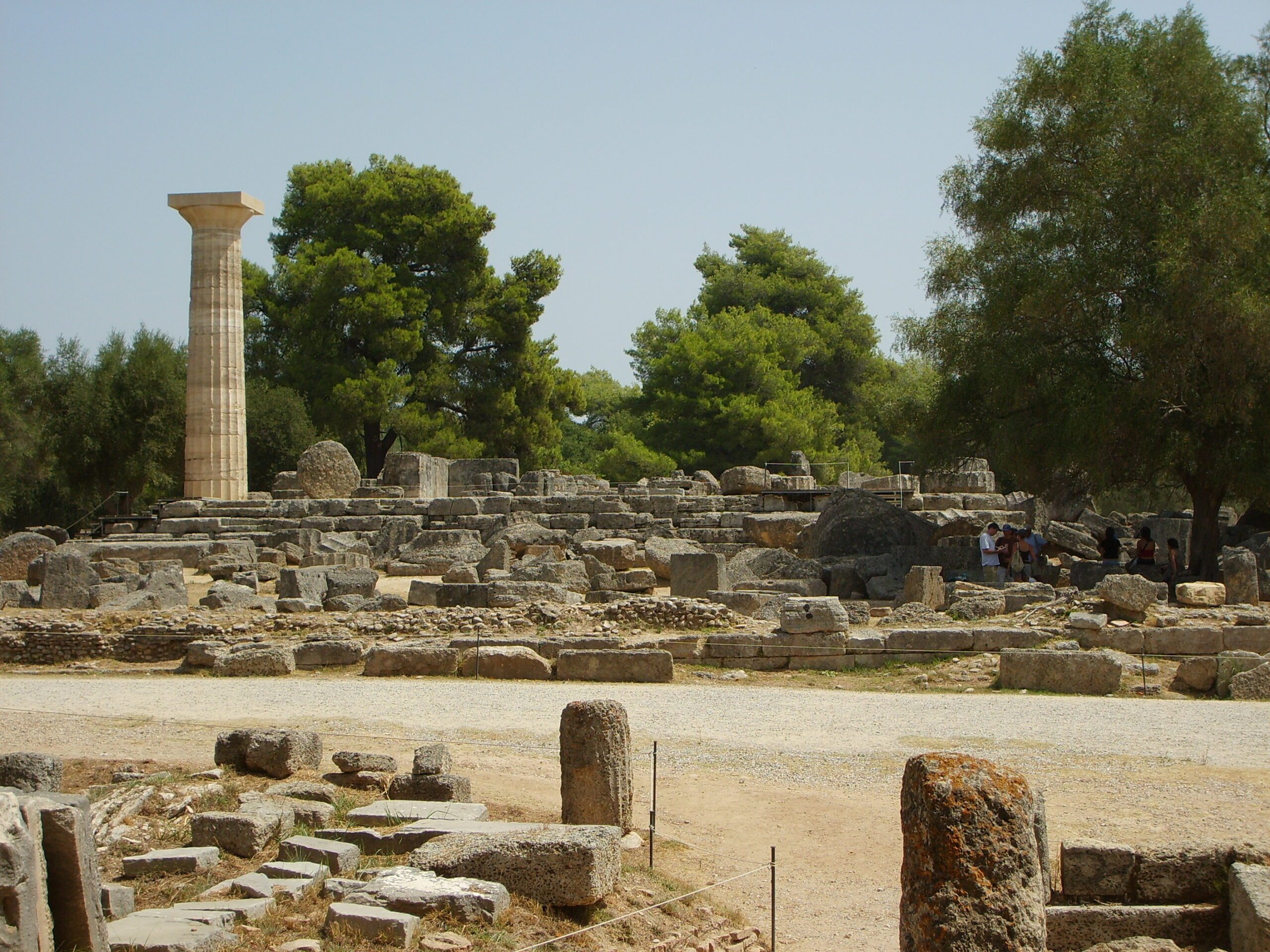Kyparissia – Ancient Olympia: The 57 km route can be covered by normal driving in approximately 60 minutes (1 hour).
Having a dream vacation in Kyparissia, the places you must visit and are close by, as you have understood, are many. And each one of them has to fill you with infinite images. A
ncient Olympia (name of the modern settlement) or Olympia (formerly) is a village and municipality of Ilia. It is built at the foot of a mountain, in the valley where the Alfeios River flows. In the same place was the sacred jumper of Ancient Olympia. All around there are low hills, on one of which Andreas Syngros built the museum of Olympia.
In the village, which is very close to the archaeological site, at an altitude of 63 meters, it is located at a distance of 23 km from Pyrgos. In the village, there are many hotels and restaurants in order to serve the tourists and visitors who arrive there from different parts of the world to admire the antiquities. Its Archaeological Museum is one of the richest in Greece. It includes the Mercury of Praxiteles as well as other wonderful statues and sculptures. There is also the Museum of Ancient Olympic Games which deals with the history of the Panhellenic games in antiquity.
In the Archimedes Museum, there are copies of ancient machines, tools, toys, etc. It is a museum of Technology. The inhabitants are engaged in agriculture but mainly in tourism throughout the year. Today, it is the seat of the Municipality of Ancient Olympia, while in the past it was the seat of the Kapodistrian municipality of the same name, clearly smaller in area. In Ancient Olympia, the railway station of the same name still operates, serving the village connecting it with Katakolo and Pyrgos. The connection to Athens and other cities does not work anymore.

Karta24 CC BY 2.5, https://commons.wikimedia.org/w/index.php?curid=1521459
Archaeological site of Olympia
In the western Peloponnese, in the beautiful valley of the river Alpheios, flourished the most glorified sanctuary of ancient Greece, which was dedicated to the father of the gods, Zeus. It spreads on the southwestern foothills of the verdant Kronios hill, between the Alpheios and Kladeos rivers, which join in this area. Welcome to Ancient Olympia! Despite its isolated location near the west coast of the Peloponnese, Olympia established itself in Panhellenic as the most important religious and sports center.
This is where the most important games of ancient Greece were born, the Olympic Games, held every four years in honor of Zeus, an institution with pan-Hellenic radiance and brilliance from ancient times to the present day.
The beginning of the cult and the mythical contests that took place in Olympia is lost in the depths of the centuries. Local legends about the powerful king of the region, the famous Pelops, and the river god Alpheus, reveal the sanctuary’s strong ties to both East and West.
According to the UNESCO World Heritage Site, there is no archaeological site in the entire world with such a close reference to today’s reality as that of Olympia. The ancient stadium of Olympia, where the Olympic games were held in ancient times, and the monumental temple of Zeus, the largest in the Peloponnese, are just some of the attractions of the area.

dronepicr – Olympic Flame, the Start of the Olympic Torch Relay, CC BY 2.0, https://commons.wikimedia.org/w/index.php?curid=106253094
Tour of the archaeological site of Olympia
Altis, the sacred grove, occupies the central part and within it develops the core of the Sanctuary, with the temples, the treasures and the most important buildings of the area. It is separated from the surrounding area by an enclosure, which at the end of the 4th c. e.g. it had two gates on its west side and one on the south, while its boundary on the east is the Stoa of Echoes, which separates the sacred space from the stadium. In the Roman period, the precinct was expanded and two monumental porticoes were formed on its western side.
In a prominent position within the sacred space dominates the giant temple of Zeus and further north the oldest temple of Hera. On the north side was the Mitroos, a temple dedicated to the mother of the gods Rhea-Kybelis, and behind it, at the foot of Kronius, the treasures dedicated by the Greek cities, mainly the colonies. To the west of them is preserved the Nymphaeum, the brilliant aqueduct dedicated to the sanctuary by Herodes Atticus.
Inside Alti there were also the Pelopio, a funerary monument, dedicated to the hero Pelops, the Prytaneion, which was the seat of the officials of the sanctuary, and the Philippio, the elegant circular building dedicated by Philip II, king of Macedonia.
In ancient times, in the southeast of Heraion (Temple of Hera) there was also the great altar of Zeus, a very important monument, but no traces of it were preserved, because it was formed by the accumulation of ash, and was dissolved when the sanctuary ceased to function. The rest of the space inside the precinct was full of altars, statues of gods and heroes, statues of the Olympians, tributes of famous individuals and Greek cities, among them the famous Victory of Paeonio, which you can admire in the Archaeological Museum of Olympia.
Outside the southern precinct of Altea, there is the Bouleuterion and even further down the Southern portico, which was the southernmost building of the wider sacred space and the main entrance to the sanctuary from this side. In the western part of the site there are buildings that served the staff of the sanctuary, athletes and official visitors and are separated from Alti by the sacred road: the gymnasium and the palaestra, training areas, the workshop of Phidias, which in the early Christian years was transformed into basilica, the Greek baths with the swimming pool, the Roman baths, Theikoleon, (residence of the priests), Leonidaio, which was a guest house for officials, and the later Roman guest houses.
East of Altea stretches the stadium, where the Olympic Games were held. In ancient times, south of the stadium there was also the hippodrome, of which today no trace survives, because it has been washed away by the Alpheios river. In the same area there are building complexes of baths and mansions, such as the famous mansion built by Nero when he lived in Olympia, in order to participate in the games.

http://el.travelogues.gr/collection.php?view=415, https://commons.wikimedia.org/w/index.php?curid=48245529




